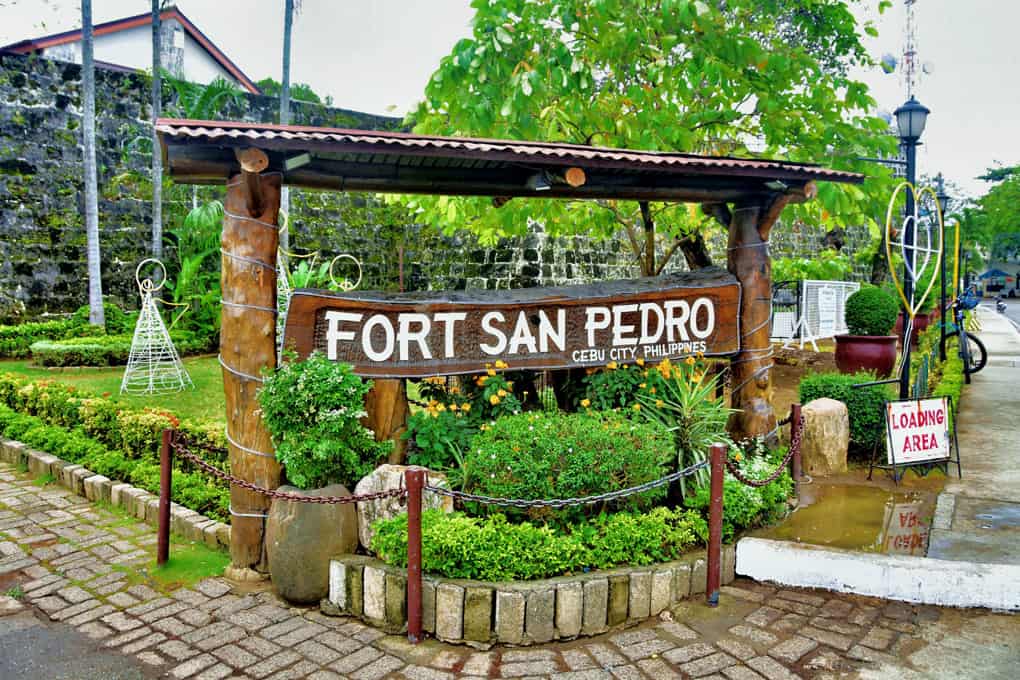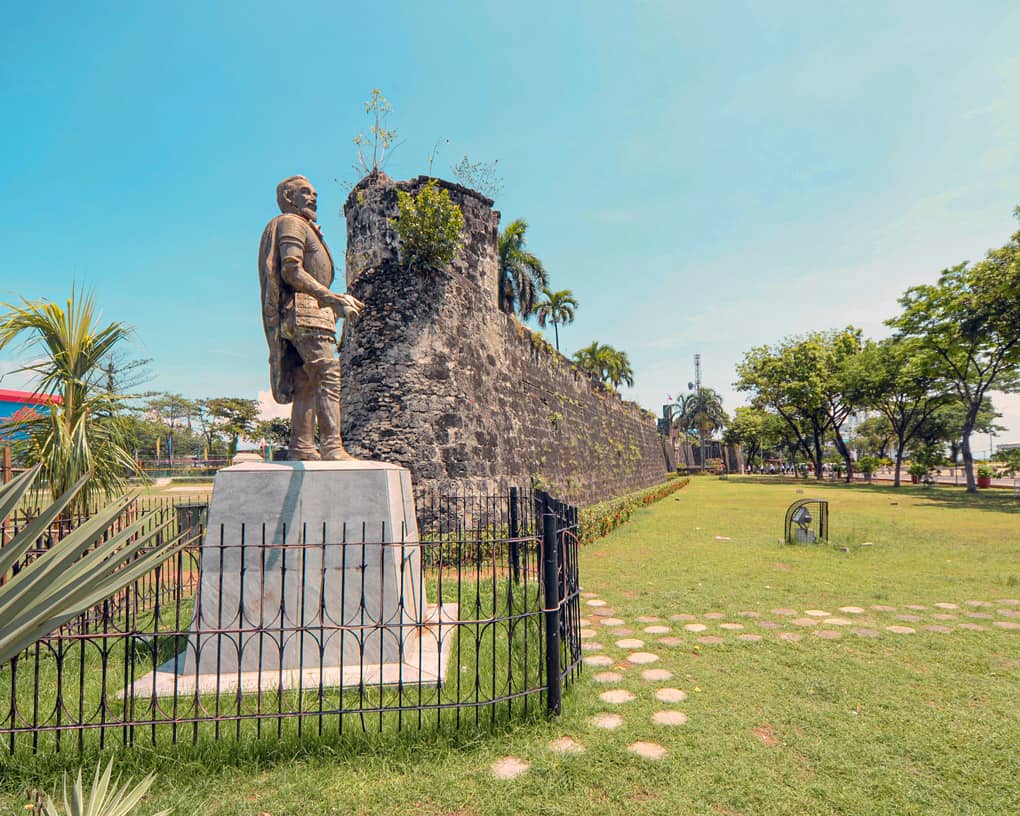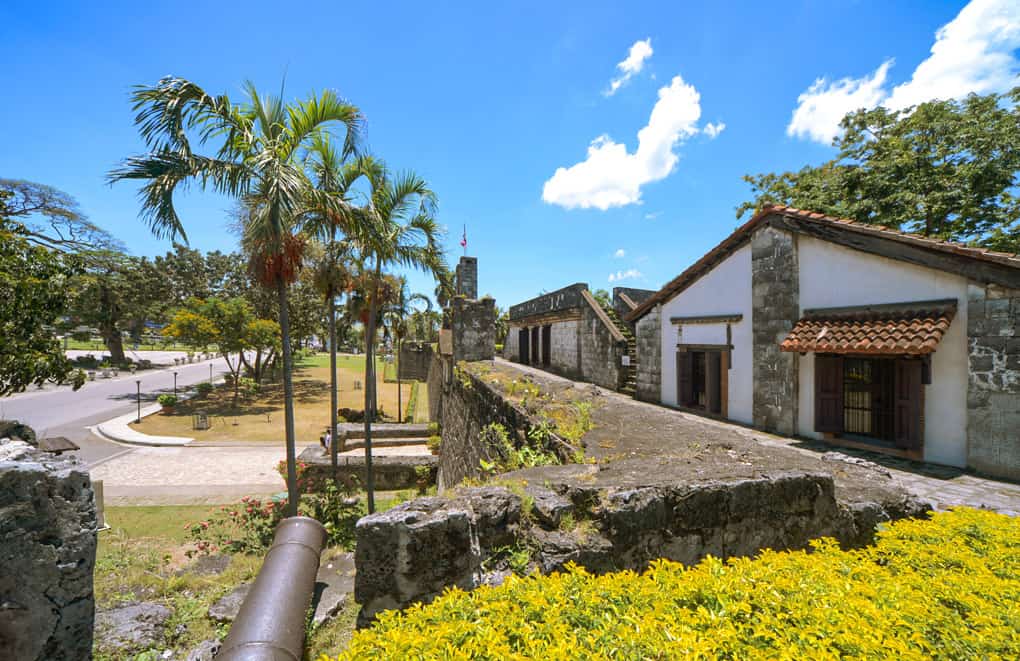Fort San Pedro
- Type: Cultural Attractions
- Location: Cebu City
- Family Friendly: Yes
- Rating: 4.9
Fort San Pedro Background and History
Fort San Pedro, located in Cebu City’s Plaza Independencia, is a historical monument dating back to 1565 under Miguel López de Legazpi. It has served various roles, from an army garrison to a zoo. It is the oldest and smallest fort in the nation and embodies Cebuano’s heritage.
Its triangular design with cannons and a wooden fence reflects Spanish military strategy. Despite partial ruins, it features a gateway, ramparts, and a museum filled with Spanish-era artifacts showcasing the Philippines’ colonial history. This is one of the oldest Cebu tourist spots.
Fort San Pedro is now a vibrant historical park managed by the Cebu City government. It offers a tranquil garden and a lawn for events, merging historical significance with contemporary use. The park is a vital link to the past, continually enriching the community.
Entrance Fees
As of 2024, entry to Fort San Pedro costs 30 pesos.
How To Get There
From within Cebu City: Take a taxi or Grab ride-hailing service directly to the fort, or catch a jeepney heading towards Plaza Independencia or the city’s pier area, indicated by signboards.
From Mactan-Cebu International Airport: The quickest option is a taxi or ride-hailing service, but you can also take an airport shuttle or bus to the city center and then switch to a taxi or jeepney.
From Cebu’s piers: Fort San Pedro is a short walk from the main pier area.
From other parts of Cebu: Arrive by bus at the South or North Bus Terminal, then take a taxi, grab a jeepney, or go to the fort.
Private Tour: Our tour packages include pickup from critical locations, offering a direct, worry-free journey to Fort San Pedro.
The Best Time to Visit Fort San Pedro
Fort San Pedro welcomes visitors daily between 8 AM and 7 PM.
Frequently Ask Questions:
When was Fort San Pedro built?
Fort San Pedro in Cebu City, Philippines, was built by the Spanish in 1565 under Miguel López de Legazpi. The current stone structure dates from 1738, making it the oldest triangular bastion fort in the country.
What is Fort San Pedro known for?
Fort San Pedro is located in Cebu City, Philippines. It is renowned as the country’s oldest and smallest fort. The Spanish established it in 1565 under the leadership of Miguel López de Legazpi.
The fort is a significant historical landmark demonstrating its past as a military defense structure during Spanish colonization.
Today, it serves as a historical park, providing valuable insights into the Philippines’ colonial history through its well-preserved artifacts and museum.
Where is Fort San Pedro located?
Fort San Pedro is located in Plaza Independencia, at A. Pigafetta Street is in the pier area of Cebu City, Philippines.
Why is Fort San Pedro important?
Fort San Pedro is vital for its historical, cultural, architectural, educational, and touristic significance. As the Philippines’ oldest triangular bastion fort, it highlights Spanish colonization’s early days and Cebu’s rich heritage.
The fort showcases Spanish military architecture and has served various roles since it was constructed by Miguel López de Legazpi in 1565, including as a defense structure and a city zoo.
Its museum, filled with Spanish artifacts, provides educational insights into the colonial era.
As a historical park, Fort San Pedro attracts visitors with its serene gardens and contributes to local tourism. Its preservation ensures the continuity of Cebu’s historical legacy for future generations.
Who built Fort San Pedro?
Fort San Pedro, located in Cebu City, Philippines, was built by the Spanish in 1565 under the command of Miguel López de Legazpi, the first governor of the Captaincy General of the Philippines.
Initially a wooden fortification, it was rebuilt in stone to provide better defense against attacks.
Why you should visit Fort San Pedro?
Fort San Pedro in Cebu City is a must-visit attraction for its deep historical connection, an architectural marvel, cultural insight, educational experience, peaceful gardens, unique event venue, easy access, and affordable entrance fee.
In short, Fort San Pedro is a budget-friendly destination that combines history, culture, and tranquility, making a visit to Cebu City worthwhile.
Can you walk around San Pedro?
Yes, you can walk around San Pedro in Cebu City. The area around Fort San Pedro is pedestrian-friendly, allowing for easy exploration of its historical and cultural landmarks on foot.
Walking around this district lets you appreciate the historic fort, nearby Plaza Independencia, and the scenic waterfront, offering a leisurely way to experience the rich history and vibrant atmosphere of Cebu City.
Why is it called Fort San Pedro?
Fort San Pedro in Cebu City, Philippines, is named after Saint Peter. The Spanish established the fort in 1565 under the command of Miguel López de Legazpi, following their practice of naming places after saints.
It was part of the Spanish colonial strategy to spread Christianity and establish their authority in the Philippines.
What is Fort San Pedro made of?
Fort San Pedro was built in 1565 as a wooden fortification and later rebuilt with coral stone in 1738 to provide better protection.
Coral stone was a popular choice for Spanish colonial forts because of its availability and durability against sieges and natural elements.
Popular Tours:

Cebu Canyoneering
The famous Kawasan falls, with its powerful and cool blue waters, brings magic in anyone’s travel.

2D1N Tour Package D
Day 1 - Moalboal, Pescador Island, Kawasan Canyoneering, Overnight at Oslob Day 2 – Whale Shark Encounter, Sumilon sandbar, Tumalog falls

Cebu City Tour
Explore the beauty of Cebu City. Witness the rich history of Cebu with its Spanish and religious influences.



